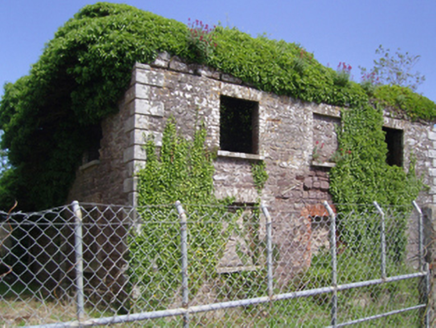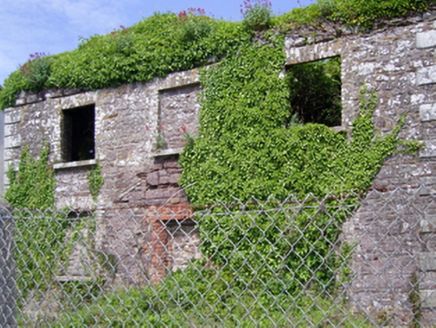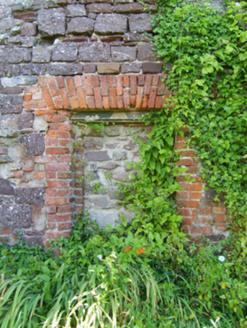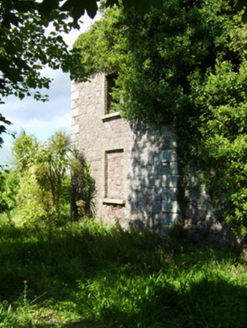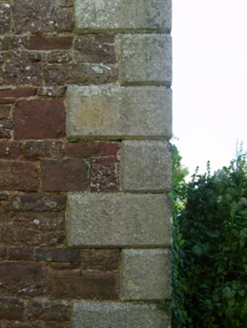Survey Data
Reg No
15619005
Rating
Regional
Categories of Special Interest
Architectural, Historical, Social
Original Use
RIC barracks
Date
1870 - 1880
Coordinates
279374, 105083
Date Recorded
04/09/2007
Date Updated
--/--/--
Description
Detached three-bay two-storey constabulary barrack, extant 1877, on a T-shaped plan with remains of single-bay single-storey gabled projecting porch to ground floor. Vacated, 1920. Burnt, 1920. In ruins, 2010. Roof missing with no rainwater goods surviving on overgrown eaves. Part ivy-covered coursed rough cut "Old Red Sandstone" walls on cut-granite chamfered plinth with rusticated cut-granite quoins to corners; remains of porch with cut-granite chamfered plinth. Square-headed central door opening with red brick voussoirs framing rubble stone infill. Square-headed window openings with cut-granite sills, and yellow brick block-and-start surrounds with no fittings surviving. Interior in ruins. Set back from line of street in overgrown grounds.
Appraisal
The shell of a constabulary barrack representing an important component of the nineteenth-century built heritage of Fethard with the architectural value of the composition confirmed by such attributes as the compact plan form; the construction in a ruby-coloured "Old Red Sandstone" with silver-grey granite dressings producing an eye-catching two-tone palette; and the very slight diminishing in scale of the openings on each floor producing a feint graduated visual impression. NOTE: Fethard Constabulary Barrack and Baginbun Martello Tower were given a combined valuation of £61 0s. 0d. in Accounts and Papers: Local Government Local Taxation &c. (1877 LXX, 34). Fethard Constabulary Barrack was occupied (1901) by Michael Sweeney (----), 'Acting Sergeant' (NA 1901); and (1911) by John Madden (----),'Sergeant' (NA 1911). Fethard Constabulary Barrack was vacated (1920) at the height of the War of Independence (1919-21) and the New Ross Standard (6th August 1920) reports that, following loud explosions and a blaze, 'it was completely burned down [with] practically nothing being left but the walls'. Michael Conway (1895-1970), in his Witness Statement to the Bureau of Military History (12th October 1956), gave the following account of the destruction of Fethard Constabulary Barrack: '[Fethard was] where we tested our first bombs made out of the boxes of cart-wheels. They proved to be most successful. During this operation I got a bad fright. When we were sprinkling the floors and woodwork of the barracks with petrol I went into the day-room with two others. Then an explosion took place inside the barracks. The door banged and locked. I had the bombs in my coat pocket. As luck happened, I was able to kick out the door panels with my foot and got out on to the road. The barracks by this time was in flames. I threw off my coat as I felt the heat on my back. I then threw the bombs through the top windows into the blazing barracks. They exploded and blew the roof completely off the barracks' (BMH.WS1509).

